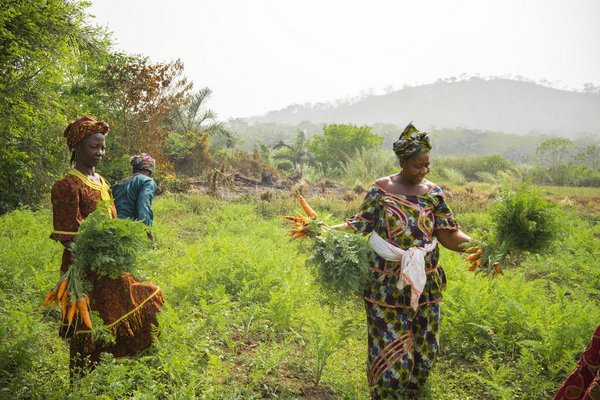 Read this article in French
Read this article in French- Share this article
- Subscribe to our newsletter
FAO endorses new Strategic Framework
In June 2021, members of the Food and Agriculture Organization of the United Nations (FAO) endorsed a new Strategic Framework for the next decade. The Strategic Framework 2022-2031 focuses on Sustainable Development Goals (SDGs) 1 (no poverty), 2 (zero hunger) and 10 (reduced inequalities) as well as boosting the achievement of the broader SDG agenda.
It intends to support the 2030 Agenda for Sustainable Development through the transformation to more efficient, inclusive, resilient and sustainable agri-food systems for better production, better nutrition, a better environment, and a better life, leaving no one behind. These four betters represent an organising principle for how FAO intends to contribute to achieving the SGDs.
To implement the Framework, FAO will apply four cross-cutting "accelerators" to all its programme interventions to maximise efforts and facilitate the management of trade-offs, according to national priorities. These accelerators are technology, innovation, data, and complements (governance, human capital and institutions).
The four betters
Twenty Programme Priority Areas (PPAs) were identified that are inter-disciplinary, issue-based technical themes, where FAO has a comparative advantage, track record and ability to act. The Programme Priority Areas are each assigned to one of the four betters:
Better Production: Green innovation, Blue transformation, One Health, Small-scale producers’ equitable access to resources, Digital agriculture.
Better Nutrition: Healthy diets for all, Nutrition for the most vulnerable, Safe food for everyone, Reducing food loss and waste, Transparent markets and trade.
Better Environment: Climate change mitigation and adapted agri-food systems, Bioeconomy for sustainable food and agriculture, Biodiversity and ecosystem services for food and agriculture.
Better Life: Gender equality and rural women’s empowerment, Inclusive rural transformation, Achieving sustainable urban food systems, Agriculture and food emergencies, Resilient agri-food systems, Hand-in-Hand (HIH) Initiative, Scaling up investment.
Fostering Partnerships
Since partnerships are central to reaching the goals of the 2030 Agenda, FAO is seeking to strengthen such partnerships across the spectrum.
It aims to strengthen its partnerships with Members, other UN agencies and financial institutions. FAO will also continue to expand and deepen its partnerships with producer organisations, academic and research institutions, and civil society organisations.
As the private sector is a key source of partnerships towards achieving the SDGs, FAO has developed a new strategy for private sector engagement which was endorsed in November 2020. The overall goal of the new strategy is to enhance engagement with the private sector in FAO’s work, including at the decentralised level, as “One FAO” to work towards more long-term sustainable solutions.
The ongoing UN development system repositioning has played a catalytic role in reinforcing and diversifying FAO’s collaboration with Rome-based Agencies (RBAs) and other UN entities at regional and country levels, the Strategic Framework says. FAO’s close relationship with the RBAs and other UN entities is also exemplified in the Programme Priority Areas (PPAs), with, for example, the PPA on Agriculture and Food Emergencies providing the direct link to FAO’s collaboration with the World Food Programme (WFP), the PPA on Scaling up Investment highlighting FAO’s collaboration with the International Fund on Agricultural Development (IFAD), and the PPA on One Health encompassing the joint work with the World Health Organization (WHO) and the World Organisation for Animal Health (OIE).
As an key emerging partnership, CGIAR is mentioned in the Strategic Framework, stating that: CGIAR has moved from being solely a research organisation to “the world's largest global agricultural innovation network” and now operates in the same development space as FAO. It is opportune to partner with the unified “One CGIAR” in order to maximise collective impact, leverage the comparative advantages and build on the institutional strengths of each organisation.
Ines Lechner, Rural 21
Read the Strategic Framework 2022-2031 at FAO website





Add a comment
Be the First to Comment